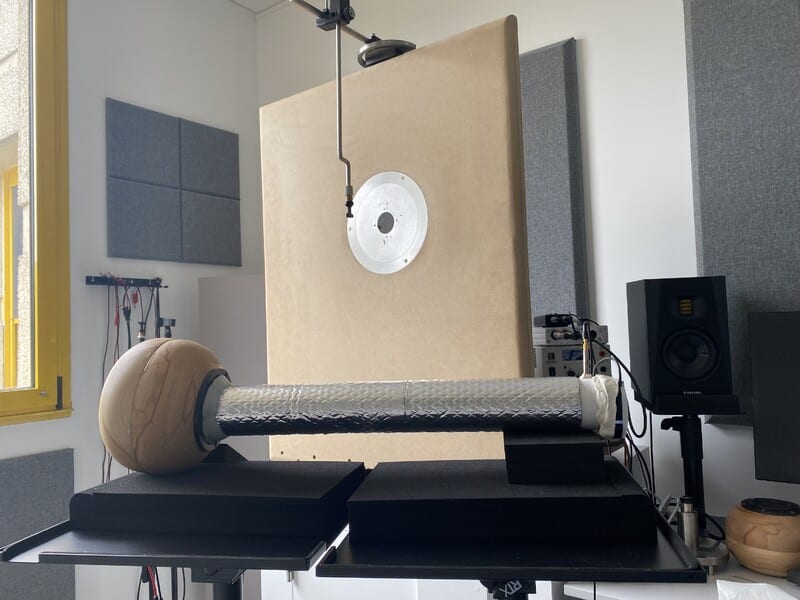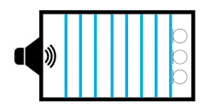
Setup of a plane wave generator with the loudspeaker on the left and the microphone network system under test on the right
As we work more and more with multi-microphone networks in our laboratories, such as beamformers, we often want to control acoustic behavior of all the microphones at the same time. One method to accomplish this is a loudspeaker system relatively far from the microphone network so that all wavefronts in the bandwidth of interest are seen as planar by the network. (Figure 2 against Figure 1). In this configuration, all the microphones would receive incoming waves with the same acoustic energy and identical phase. However, depending on the frequencies of interest, this condition may require installing the loudspeaker system so far away from the microphone network that energy for correct measurement is not possible. An alternative way of building plane waves is by using a closed cavity (Figure 3), where one of the ends is connected to the loudspeaker system and the other connected and sealed to the microphone network in test.

Dimensions of the cavity will define an upper frequency limit where the wavefronts will not be planar anymore.
Considering in example cylindrical cavities, this frequency can be estimated using the following formula:


FIGURE 3
Are you planning to quantify behavior of microphone arrays? SELTECH can help you with the measurement setup.
SELTECH can provide support to choose the best speaker and design the form factor of a prototype with ideal sound reproduction – tailored for the typical use case and environment that your device would be used in.
Review by:
– Frédéric Fallais, Acoustic Application Engineer
– Arthur D., Acoustic Technician

